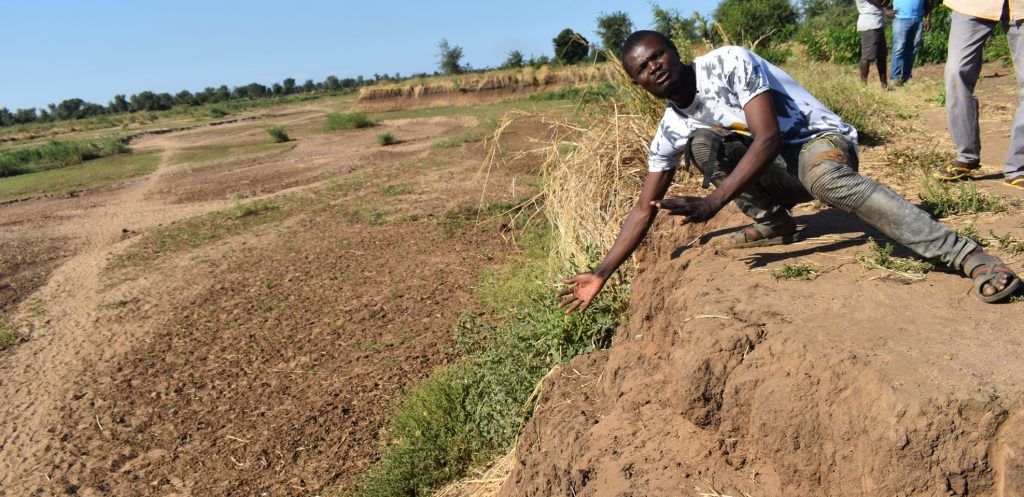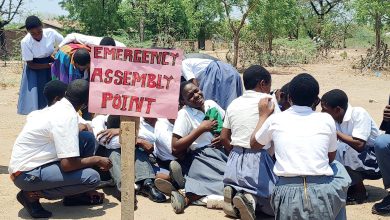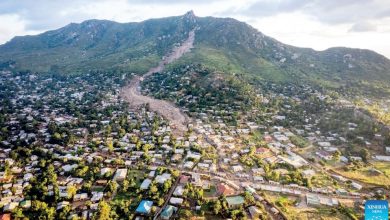Eroded village turns to trees
Did you know that the country loses about 30 metric tonnes of topsoil per hectare annually?
This is not the stuff of imagination for Chembe residents along Lifidzi River in Salima District.

The farming community needs not comb bulky reports to understand the harsh reality captured by the UN’s Food and Agriculture Organisation (FAO).
“For us, the loss of fertile farmland and homes is an everyday reality,” says Laston Maston. “Every rainy season, Lifidzi River breaks its treeless banks and washes our land which has been home and a food basket to generations.”
Lifidzi welcomes inflows from Linthipe, Lilongwe and Diamphwe rivers upstream.
It splits the floodplain near Salima town on the way to Lake Malawi.
The loss of green cover along the bank has left it hugely silted and without a defined course.
“Lifidzi flows all over the place because it is buried in sand. It’s so shallow that it easily floods when it rains heavily,” Maston explains.
Last year, the river broke its banks and washed away fertile farmlands the size of about 100 football fields.
The floods have left a huge gully in a plain where fertile soil have gone to the lake.
“Those are our fields and homes gone with the floods. For those displaced, this was their only inheritance and source of livelihood,” says the youthful father of three.
According to FAO, it takes over a century to replace topsoil necessary for bumper yields.
Chembe locals estimate that frequent flooding has displaced over 70 families in a decade.
This mirrors how low-income communities bear the brunt of disasters made more frequent and devastating by climate change.
“Just last year, the swelling river washed away seven households. We had to move the remnants upland to save their lives,” says Limbikani Samuel.
He leads the village natural resources management committee.
The volunteers have embarked on planting trees along the riverbank to safeguard their crop fields and settlement.
They envision the trees replacing those cut down for firewood, charcoal and building materials.
“These trees will spread their roots to slow rainwater so that it can sink into their fields instead of flooding, scraping and gullying the fertile farmlands,” says Samuel. “Our area is prone to storms that make the river swell furiously. As these trees cover the bare riverbanks, our area will become a no-go zone for floods that have become more frequent and destructive.”
The volunteers are replenishing the trees with support from the Scottish Government through DAI in partnership with World Relief. At CoP26, the UN Climate Change Conference held in Glasgow in November 2021, Scotland unveiled a one million British pound Loss and Damage Fund for the benefit of least development countries hit the hardest by climate-related disasters.
Scotland’s First Minister Nicola Sturgeon challenged other wealthy countries, which are responsible for massive carbon emissions fuelling climate change, to make pledges towards the fund established the following year at CoP27 in Egypt.
According to World Relief economic empowerment manager Thokozani Banda, the trees planted by the village natural resources management committee are part of the climate justice project underway in disaster-prone territories under traditional authorities Ndindi and Pemba.
“The natural resources management and tree-planting initiative is part of the recommended practices to strengthen structures aimed at reducing the loss and damage caused by climate change”, he said.
Samuel’s group in Salima are among the early beneficiaries of Scotland’s pioneering funds to offset the loss and damage caused by climate change.
The group sowed 140 000 trees and transplanted 126 000 to a riverbank where floods ripped dozens of homes.
However, the locals want more support to plant more trees—as well as bamboos, reeds, bananas and elephant grass—along the fragile riverbank.
“This soil is our only home and source of livelihood. The graves that were washed away by the river were like a title deed. While we continue to share the remaining land with our displaced colleagues, we cannot continue to lose more land,” says Sineji Makwenda.
He is concerned about the continued loss of land.
“The bigger part of our village has gone with floods. The remaining quarter of the village is now clustered with a huge population, meaning we have to share the enduring fields like slices of a cake at an overcrowded party.”
Makwenda lost a crop field the size of two football grounds where he used to grow maize, cotton, cowpeas and cassava.
The shrinking land size also deprives livestock of the grazing zones, forcing some to browse on the fledging trees planted to avert the climate-related crisis.





